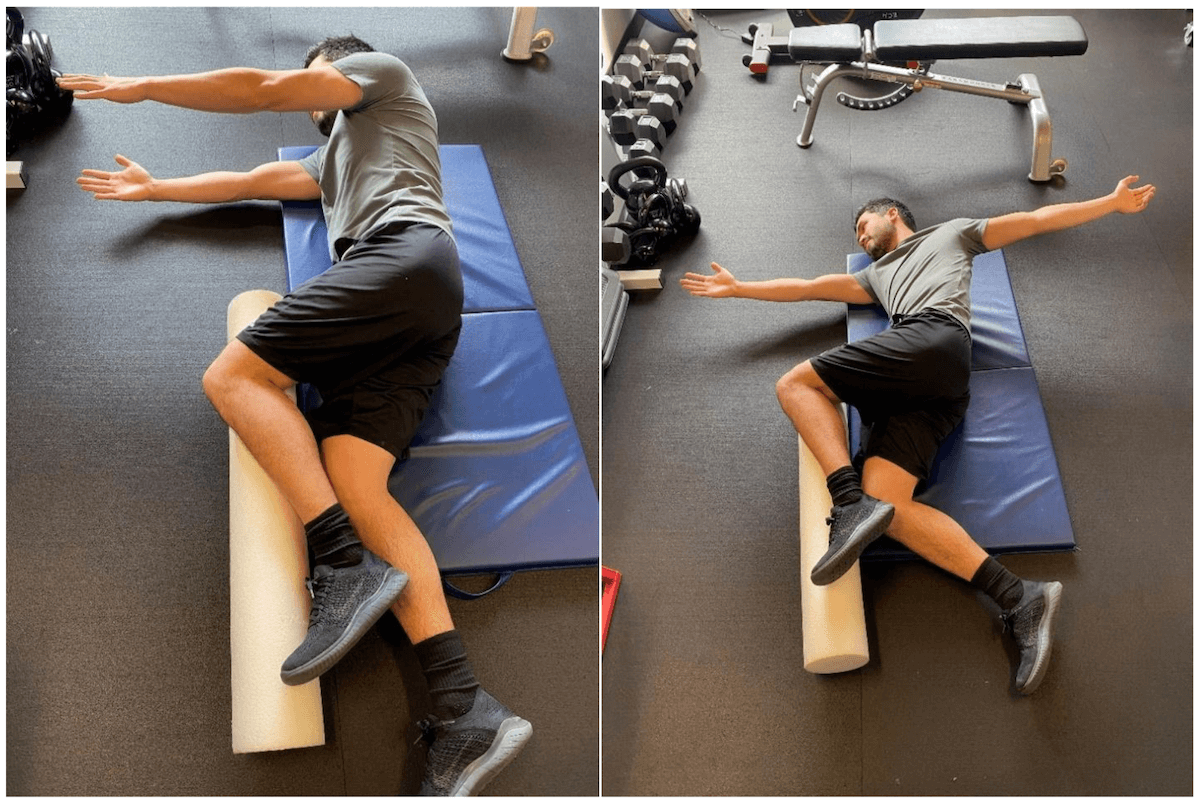If your lower back has ever hurt during or after a round of golf, you are not alone. Lower back pain can be one of the most debilitating golf injuries and one of the most common. Golf is a hard enough game as it is, without a painful back. Whether you have pain during your swing or if your back gets stiff and sore later in the round, this post is for you. I will go over some causes of lower back pain from golf and, more importantly, how you can fix it.
Common Causes of Lower Back Pain From Golf
There can be many causes of lower back pain while golfing. One reason is the bent-over position of our body when we address the ball. This can put extra load on our back muscles, especially if our gluteal muscles are weak. Even putting can increase the stress on our low back. Additionally, the forceful rotation of our back during the downswing is inherently hard on our lower back, especially when we do it repeatedly over 18 holes.
How Can I Fix It?
While we cannot do anything about the bent, twisting motion of a golf swing, we can train our bodies so that they are better able to handle the stress of the swing.
Undoubtedly, improving overall body strength will help your lower back and your golf game. Modern tour players have taken this to the next level with their training and off course workouts. Some of the game’s best players, Bryson DeChambeau, Brooks Koepka and Rory McIlroy have been renowned for their work ethic and physique. Unfortunately, most of us do not have time to train at the level of a tour pro.
Fear not! There is one simple exercise which can help rid you of that troublesome back pain. It will only take about 10 minutes per week to complete. It might also help your swing. Less pain and a better swing? Who doesn’t want that!
This exercise focuses on a very important area of the golf swing. The ability to rotate through our spine. Most of the rotation in our spine actually happens in our mid back (thoracic spine) with very little rotation occurring in our lower back (lumbar spine). The orientation of the lumbar vertebrae only allows for a very small degree of rotation, compared to our thoracic vertebrae.
Then How Come My Lower Back Is Always Sore?
Good question. If we cannot rotate through our mid back properly, the force generated during a swing will be transmitted elsewhere, usually to the lower back. Increasing rotational force to a part of the body that is not designed to rotate is usually a recipe for pain.
The Exercise: A Mid Back Twist.
Starting position: Lay on your side, top knee supported by foam roller or pillow. This helps to stabilize our lumbar spine and focus the movement in you mid back.
Movement: Rotate the top arm upwards and let it fall down towards the floor. Then return the arm to the starting position. Maintain relaxed, deep breaths throughout the movement, feeling a stretch in your chest or your mid back. You might have a little range of motion the last few repetitions. Repeat on both sides. Repeat 10-15 times, perform 2-3 sets and try to do it at least 3-4 days per week.

Diversified Health Clinic physiotherapist, Spirit Donahue, demonstrates exercises for preventing and treating lower back pain from golf.
This exercise can also help our golf swing. Being able to properly rotate through the thoracic spine is a very important aspect of the takeaway. It allows us to maintain proper spine angle through the takeaway and not ‘stand up’ during out back swing. This can improve our position during the down swing and can lead to more consistent, solid ball contact.
While limited mid back rotation is a common and easily treatable limitation in the golf swing, there can be other causes of golf related low back pain. Our bodies are incredibly complex, and it is always a good idea to have it looked at by a health care professional. However, I have found improving mid back rotation to be an incredibly important factor in reducing golfing related low back pain.
I hope this exercise helps alleviate your lower back pain from golf and increases your enjoyment of this incredible (and frustrating) game.
 Author: Spirit Donahue, MPT | Physiotherapist
Author: Spirit Donahue, MPT | Physiotherapist
Book Your Appointment With Spirit Donahue
If you have questions about your golf swing and how to prevent or recover from lower back pain from golf, contact our clinic today at (250) 382-0018 or book an appointment online with physiotherapist Spirit Donahue at Diversified Health Clinic in downtown Victoria. We offer direct billing and weekday and weekend appointments. Please view our hours of operation and location details here.



